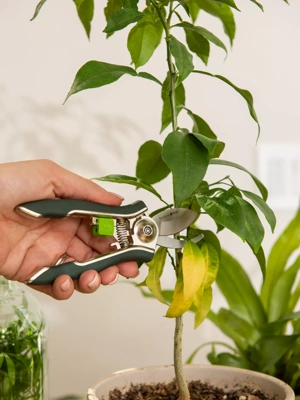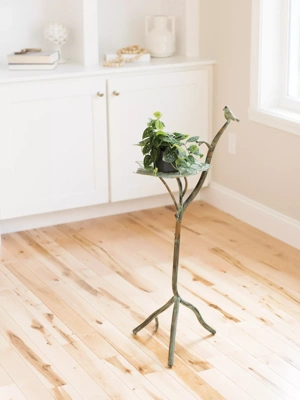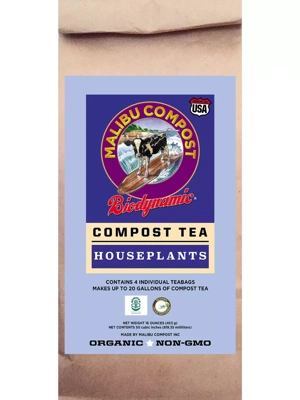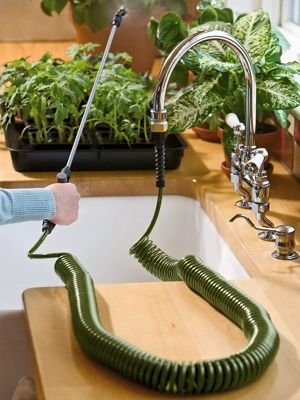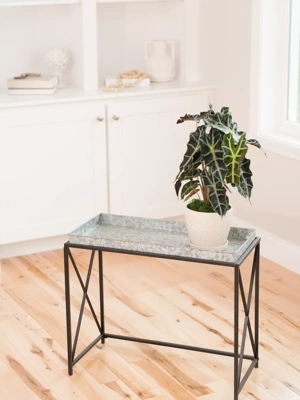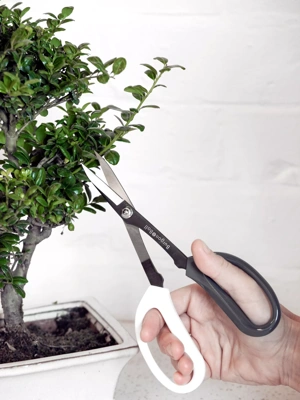How To Grow and Care For Monstera

Types of Monstera to Try
Monstera deliciosa: The classic Monstera with large, fenestrated leaves. Try 'Variegata' for its striking white and green pattern.
Monstera adansonii : Smaller than most of the other Monstera, this species is perfect for apartments and small living spaces. Also known as the Swiss cheese vine, it has smaller, more finely divided leaves.
Monstera obliqua : A rare and highly sought-after variety with more intricate, perforated leaves.
Monstera dubia: Also a small species, M. dubia is a silver-leaved creeping vine that benefits from climbing up a support or plant stake.
Best Growing Conditions for Monstera
Light
Belying their large, elaborate leaves, Monstera actually do not need very much light. Avoid direct sunlight (it can burn leaves) and position your Monstera in medium, indirect light.
Soil
Rich, aerated soil is crucial for Monstera. A blend of regular potting mix with perlite or orchid bark provides the necessary drainage. Consider repotting every 1-2 years to refresh the soil and more space for root growth.
Humidity
Monstera prefer higher humidity levels that mimic its tropical habitat, although an otherwise healthy plant can adapt to standard household humidity. You can increase humidity by misting the plant, using a humidity tray, or placing the plant in a bathroom.
How to Care for Monstera
Watering
Monstera prefer consistent watering, but they don't like to sit in soggy soil. Water your Monstera when the top inch or two of soil is dry, typically every 1-2 weeks. Allow excess water to drain from the pot to prevent waterlogged roots.
Fertilizing
During the growing season (spring and summer), feed Monstera with a balanced, water-soluble fertilizer every 4-6 weeks. Reduce or stop fertilization in the dormant season (fall and winter) to give the plant a rest.
Pruning
Prune your Monstera to control its size and shape. Remove dead or yellowing leaves and trim leggy growth to encourage bushier growth. Monstera will naturally grow and creep upwards and develop aerial roots to attach to support structures, but it can also drape elegantly if not provided with a vertical support.
Propagating
Monstera is relatively easy to propagate through stem cuttings. Cut a section of stem with a node and aerial root, place it in water or directly in moist soil, and wait for roots to develop before potting it.
Repotting
Roots creeping out of the drainage hole, a significant slowing of new growth, and potting mix that dries out much quicker than it used to — these are all signs that its time to repot your Monstera. Remove your Monstera from its current container by tipping the pot to its side and gently teasing the roots out. Choose a container that is 1-2 sizes larger than the current pot, fill it with fresh potting mix, and place the Monstera inside so it sits level with the top of the new container.
Monstera Pests and Problems
Notable Pests
The Monstera is typically a pest-free plant but occasionally it can get hit with spider mites, mealybugs, and aphids. Regularly inspect your plant for signs of infestations and treat pests as soon as they appear with sprays of neem oil.
Notable Diseases
Monstera is susceptible to root rot if overwatered and allowed to sit in perpetually soggy soil. Choose a well-drained potting soil and water when the top of the soil feels dry.
Signs of Stress
Signs of stress in Monstera include:
Brown, crispy leaf edges: Too much direct sunlight and potential mineral build-up. Move your Monstera away from the window to a less-sunny location. Be sure to water your Monstera deeply so that water flushes out the bottom drainage hole, and do not let your pot sit in a dish of water (dump it out).
Yellowing leaves with blackened stems: Overwatered plant. Remove your Monstera from its current container and pot it up in fresh potting mix in a new container with adequate drainage at the bottom. Reduce your watering frequency.
Monstera FAQs
Q: Why won’t my monstera leaves split?
A: It takes a lot of metabolic energy to produce giant fenestrated (perforated or “holey”) leaves. Without sufficient light, your monstera can still survive and grow, but the new leaves will be smaller and lack those funky perforations — move your plant to a higher light environment.
Q: How often should I repot my Monstera?
A: Repotting every 1-2 years or when the plant outgrows its current pot is recommended to provide fresh soil and more space for root growth.Roots creeping out of the drainage hole, a significant slowing of new growth, and potting mix that dries out much quicker than it used to — these are all signs that its time to repot your Monstera.
Q: My monstera is huge — how do I prune it?
A: Unlike many, many other plants, monstera aren’t pickyabout the pruning process. Start by removing any dead leaves, then trim back stems (at the soil surface) to help thin out the overall mass of the plant; this will help improve airflow. If aerial roots have escaped their pot and you don’t plan to train them up a trellis, you can prune them close to the main stem. You can also dig up and divide your monstera into two (or more!) separate plants.
When placed in the right environment, Monsteras are vibrant, statement-making addition to any home! Consider adding 1 (or 2) of these gorgeous tropical houseplants to your indoor garden.
Last updated: 02/05/2024
Print this Article:
Related items
Related Articles
Get the Dirt
Stay up to date on new articles and advice. Please fill out the information below.

